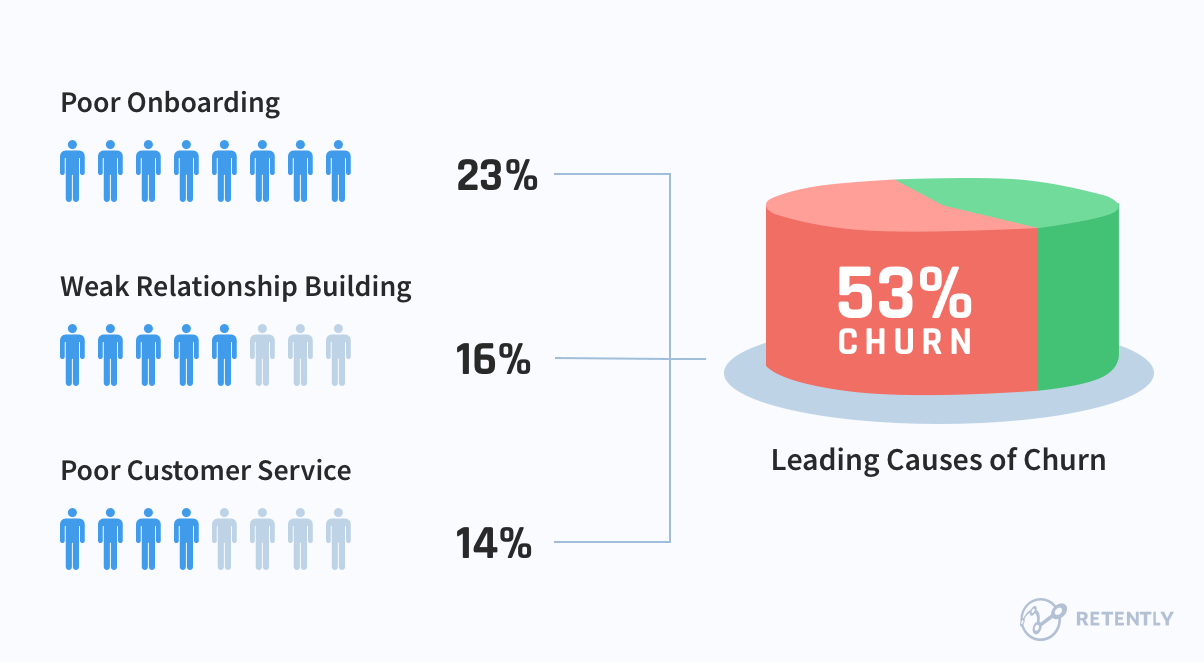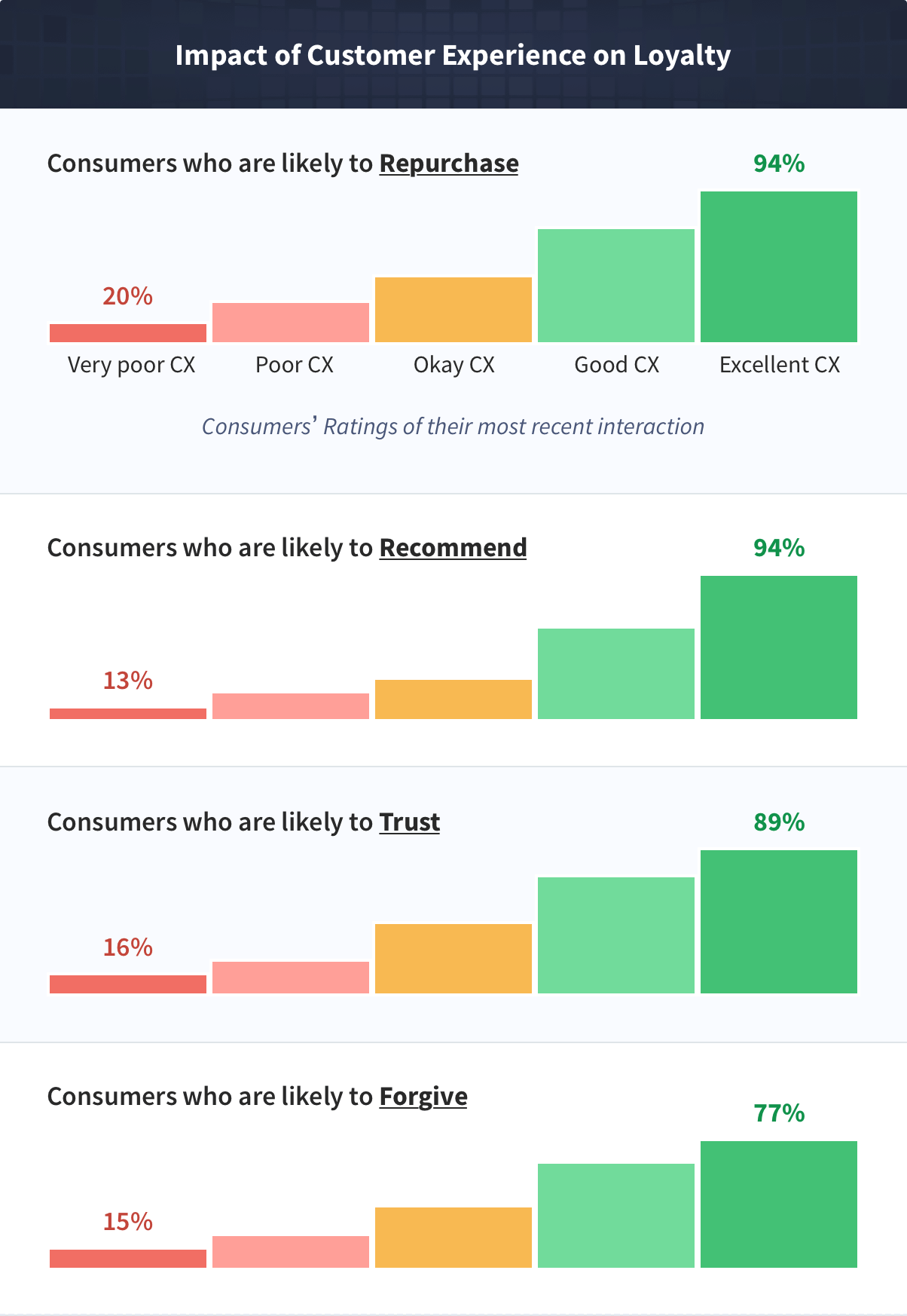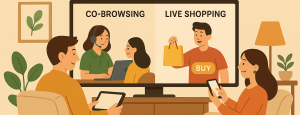Table of Contents
Churn. It’s that awful, nasty, revenue-crushing word that every SaaS company has to deal with at some point in their customer lifecycle. Some companies experience a massive churn rate and have to fight for every customer. Others have cracked the code and find their churn rate so low, they rarely have to think about it. There is also a third group of businesses that will continue to grow in spite of a high customer churn because of the impressive revenue generated by existing clients.
Understanding the reasons behind customer churn and working around them when adjusting your approach will make the difference. So, let’s start off by looking into the leading causes for an increased turnover and go through some actionable tips to follow if you want to stay on the safe side.
Key Takeaways
- Ineffective onboarding causes 23% of customer churn. A smooth, well-guided onboarding process that aligns with customer expectations can boost retention rates.
- Weak relationships account for 16% of customer churn. Building ongoing relationships through proactive and personalized communication fosters customer loyalty.
- Poor customer service leads to 14% of customer churn. Responsive customer support that promptly addresses issues helps maintain customer satisfaction.
Customer Success and Churn
Great customer success is perhaps the single greatest defense you have against high churn. Some areas where the churn rate is affected most significantly are during the Onboarding, Product Adoption, Customer Retention, and Product Expansion stages. All of these key areas are within the domain of Customer Success and by emphasizing outstanding service, you have the potential to dramatically reduce customer churn.
Indeed, within these four stages lies a full 53% of all causes of customer churn. Put a different way, by mastering these four key stages you can reduce customer churn by more than half!
But what about the other 47%? The other causes of customer churn lie in different stages of your customer’s relationship with you. To combat these areas, you need to influence the Customer Attraction, Engagement, Trial, and Conversion stages of your customer relationship. While these stages do not fall directly into the realm of Customer Success — after all, these stages deal with creating a customer not managing an existing one — you can still influence them through managing Customer Success efficiently.
This means that by developing a strong Customer Success team, you directly impact 53% of all causes of churn— and positively influence the other 47%!
The Three Leading Causes of Churn
Statistics show that 53% of all causes of customer churn are due to three leading causes. To have the greatest impact on customers and to keep your churn rate low, it’s essential to tackle these “Big Three”. Are you losing customers due to poor performance in one of these key areas?

1. Poor Onboarding – results in 23% of average customer churn
In their struggle to attract new customers and juice up revenue, many brands end up losing sight of the existing audience, while the moment to care for them is actually starting with the onboarding stage. This is when customers are excited to learn more about your offering and put effort into it to make it work towards their goal.
At this stage, your customer really engages with your Customer Success team, is reassured they made the right choice, and it’s here where you can make the greatest positive impact. Poor onboarding results in 23% of the average customer churn.
Avoid early frustrations by learning more about customer requirements, predicting their needs and guiding their way towards the expected outcome from your product. Make them feel welcomed from the very start and show them how your offering can add value to their business. If you set the right pace, opt for straightforward communication and are proactive in your attempts to convert simple features into business benefits, it will definitely add up to your long-term customer base.
But what if you have attracted the wrong audience from the start? Some clients may subscribe to your product without fully understanding your solution or simply because an incentive triggered them. The moment they realize your product is not a fit they will simply leave for a competitor affecting your churn rate.
That is why it’s crucial to understand who your ideal customer is, and which of them, regardless of efforts, will bring nothing but a temporary increase in the monthly revenue. Having these delimitations and keeping profitability in mind, you can decide if the customers that are about to churn are worth saving or were worth acquiring in the first place.
Understanding expectations and delivering accordingly, or suggesting a different alternative if your product is not a fit rather than opting for a short-term deal, would help improve your customer churn rates. To avoid disappointments from an early stage, make sure to have a clear and aligned message across all your promotional channels, be honest about your products’ capabilities and share realistic timelines regarding new features. Offering a free trial period would facilitate the choice as well.
Takeaway: If you don’t support your customers in their first steps of interaction with a product they are not accustomed to, the chances for them to run into a bottleneck and fail to see the value of your product is extremely high. Educate your audience from the early stages of the customer experience and nurture their interest along the way to increase your retention rates.
Onboarding Essentials: Top Tips
Here are a few essential tips for an effective onboarding process:
- Define Your Onboarding Process and Make it Mandatory: A clear, mandatory onboarding process ensures consistent and high-quality customer training. Use a detailed checklist to guide new users through setup, key features and best practices.
- Simplify Tasks With Walkthrough Guides: Interactive tutorials, PDFs, or in-app assistance simplify complex tasks. Step-by-step instructions and pop-up tips make navigating a new product intuitive.
- Create Engaging How-to Videos and Build a Comprehensive Knowledge Base: How-to and educational videos simplify complex details for visual learners. Actually, around 92% of users watch video content, with about 25% preferring how-to guides and just over 26% – educational videos. Complement these resources with a comprehensive knowledge base, including FAQs and detailed guides.
- Offer Product Demos: Live or recorded product demonstrations showcase your product’s capabilities. They allow users to see the product in action and ask questions in real time.
- Wrap Software Lessons Within Industry Best Practices: Incorporate industry best practices into your training materials to teach users how to use your product effectively within their specific field. This way, they can apply your product to real-world scenarios.
- Personalize Onboarding to Avoid Spamming Newcomers: Leverage customer data to tailor the onboarding experience to each user. Segment users based on their needs and preferences to deliver relevant content. Ensure new users receive information that is most useful and engaging for them.
- Be Transparent and Don’t Overpromise: Maintain clear and honest communication about your product’s capabilities to build trust and reduce customer disappointment. According to the Edelman Trust Barometer Special Report, 81% of consumers consider trust in a brand a critical factor in their purchasing decisions.
- Monitor User-Health Based on Behavior to Facilitate Product Adoption: Track key behaviors such as login frequency, feature usage, and support requests to understand and boost product adoption. Proactively reach out when engagement metrics drop to provide timely assistance.
- Test and Measure Onboarding Approaches: Experiment with different onboarding methods. Use A/B testing to identify the most effective practices and track key performance indicators like user engagement, satisfaction, and retention rates to measure impact.
2. Weak Relationship Building – accounts for 16% of average customer churn
Building long-lasting relationships with your customers is a process that starts at the early stages of the customer lifecycle throughout and generates the loyalty you are granted in the long run. Loyalty is an undeniable differentiator between you and your competition.
There are no flawless products that will ensure a lack of bugs over time. There are plenty of occasions when your competitors will try to lure your clients on their side with better deals. You can of course try to stand out with competitive advantages like more features or buy them off with incentives; however, you will be always facing the challenge to lose this customer. Instead of counting on short-term measures, try to build an audience that will be loyal based on their perception of your brand rather than interchangeable additions.
Throughout all your interactions with a customer, it’s essential to nurture a healthy and sustainable relationship that goes far beyond the initial sale. Weak relationship building accounts for 16% of the average customer churn. The key is to make them feel listened to and cared for, as well as understand they’re working with a proactive and professional team that always strives to provide the best customer experience.
A recent CX study showed a direct relation between customer experience and loyalty, most clients being more likely to trust, repurchase, forgive and recommend a brand if an excellent customer experience is ensured.

At the core of an amazing customer experience lies data. The history of a brand’s interaction with the audience can shed light on their engagement with the product over time, highlight issues they faced along the way, and offer bits of information that if properly ordered will shape a story. And here’s where the Customer Success team should take the floor and act.
By monitoring behavior, you can easily determine which are the customers at risk to churn and approach them first. Whether they have been idle for some time, had complaints which were not paid attention to or poorly adopted your tool, find these reasons to touch base with your customers before it is too late. The natural causes of churn, such as expired credit cards, payment problems or loss of contact points/key users, can also be tackled more efficiently if the in-app analytics are properly exploited by the Customer Success team.
Don’t count on clients telling you about their difficulties, because often they won’t. Only one out of 26 unhappy customers will actually voice his dissatisfaction, the rest will simply churn. So, it’s up to you to be one step ahead and predict their actions, analyze customer satisfaction and make feedback an indispensable part of your product roadmap.
Takeaway: Fostering brand advocates that will hold on to your product, refer other customers by spreading word-of-month and thus help your business grow is easier said than done. It’s an endeavor that takes time, a lot of effort and consistency from your side.
Relationship-Building Essentials: Top Tips
Nonetheless, here’s a few tips that will help you out in this direction:
- Collect Customer Feedback Regularly: Gather customer feedback through quarterly business reviews and customer surveys. This helps you understand evolving needs, improve satisfaction, and show customers you value their input.
- Be Proactive: Monitor customer health and engage early at signs of dissatisfaction. Use tools to track engagement and health scores to address issues before they become liabilities.
- Send Personalized Communications: Customize communications based on customer behavior and interests. According to Campaign Monitor, personalized emails have a 29% open and a 41% click-through rate, significantly higher than their generic counterparts.
- Inform About New Features and Useful Content to Make Value Visible: Keep customers updated on new features and provide valuable content. This improves their experience, shows sustained value, and encourages ongoing product use.
- Build Relationships With Power Users, Key Contacts, and Executive Staff: Engage with key stakeholders and decision-makers within your customer base. Strong relationships provide insights into product use and help tailor offerings more effectively.
- Integrate Support and Marketing Tools: Use integrated tools to gain a complete overview of the customer experience. This ensures seamless support and targeted marketing, offering valuable insights into customer journeys.
- Adopt Automated Dunning Solutions: Implement automated reminders for overdue payments to combat involuntary churn and retain customers.
- Create a Customer-Centric Culture: Ensure all team members are committed to delivering exceptional experiences and resolving issues promptly, driving customer loyalty and growth.
3. Poor Customer Service – accounts for 14% of average customer churn
The Customer Support team is that bridge between your product and expected outcomes, playing a crucial role in shaping the end-to-end customer experience. In an ideal picture, they, together with the Customer Success team, are the relationship-builders, skillful communicators and good listeners, the ones who can convert any customer issue into answers and solutions.
This is especially relevant nowadays, as customer expectations increased considerably due to the extensive choice and accessibility of information. With lower switching barriers, each ignored complaint, the lack of speed and proactivity, your attitude or poor expertise will cost you a client out of the door who will not hesitate to share his dissatisfaction with others.
According to a Microsoft’s study, 96% of global respondents consider that customer service has an important role in their choice of loyalty to a brand and 56% of them have ended their relationship with a business due to a poor customer service experience.
Bearing in mind the costs of acquiring a new customer, you might want to think twice before crossing that danger line of neglecting your audience. Poor customer service accounts for 14% of the average customer churn. What’s more, 52% of B2B customers will avoid a brand for two years after one bad customer support experience. Having your customer satisfaction at all times on the top of your mind and at the core of your actions will single you out from the pack.
Takeaway: In a similar vein, be sure that when a customer has an issue, a resolution is never far away.
Customer Service Essentials: Top Tips
Here are the top customer service hacks for preventing high churn:
- Make Self-Service Easy: For every service request you receive, four other customers are seeking self-service. Create easy-to-follow FAQs, detailed guides, and step-by-step instructions. Use chatbots and AI support to answer questions instantly, freeing up your support team for more complex issues.
- Put Your Employees First: Happy employees treat customers better. Invest in their training and celebrate their achievements to boost morale and motivation.
- Offer Omnichannel Support: Give customers multiple ways to reach you: phone, email, live chat, and social media. Ensure channels are connected, so customers don’t have to repeat themselves. For example, a customer might start a conversation on social media and finish it on live chat without losing context.
- Don’t Use Generic Automated Replies: Personalize automated messages to address specific customer issues. Show empathy and understanding to make them feel valued. Instead of a generic “We have received your query,” try “Hi [Customer Name], we understand your concern about [specific issue] and are working on it.”
- Close the Feedback Loop in a Timely Manner: Respond to customer feedback quickly. Acknowledge receipt, keep them updated, and inform them when it’s resolved. For example, within 24 hours of receiving their feedback, reach out to explain how you fixed the issue. This shows you value their input and are committed to improving.
- Track Response Times and Satisfaction Ratings Over Time: Use metrics to monitor response time and customer satisfaction scores. Spot trends and use that data to improve. For example, if response times are slow during peak hours, consider adding more staff during those times.
- Monitor App Usage to Identify Customer Issues: Use analytics to see how customers use your app. Identify trouble spots and fix them to improve the user experience. For instance, if lots of users drop off at a specific feature, investigate and take action.
- Focus on Common Pain Points to Prioritize Features/Fixes: Listen to customer feedback to find out what issues come up the most. Focus on fixing these problems first to make the overall experience better. If many customers mention a bug, prioritize fixing it over adding new features.
Your Secret Weapon: a Culture of Customer Success
While the above strategies are very practical, it’s important that you don’t stray from the ultimate goal – discourage churn before it ever becomes a problem.
Customer satisfaction surveys and in-app data might be a good place to start with. By monitoring customer health, you can easily dissect the causes of customer churn, understand your overall performance and improve it in order to provide the best customer experience. Invest time and effort in a long-term relationship with your audience by overdelivering at each touchpoint and keeping an ear out for their insights.
Your secret weapon is creating a culture of Customer Success in your organization while keeping your customers at the heart of your efforts. Make sure that everyone (from Sales to Engineering to Marketing to Customer Success) understands that their job (ultimately) is to make the customer feel like a million bucks.



































 Alex Bitca
Alex Bitca 

 Greg Raileanu
Greg Raileanu 

 Christina Sol
Christina Sol 
